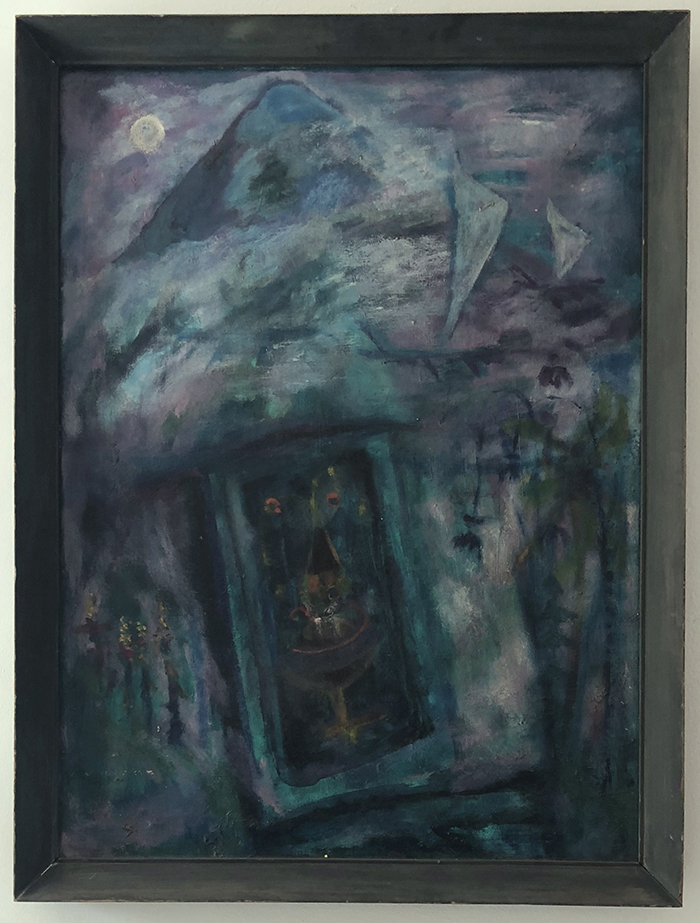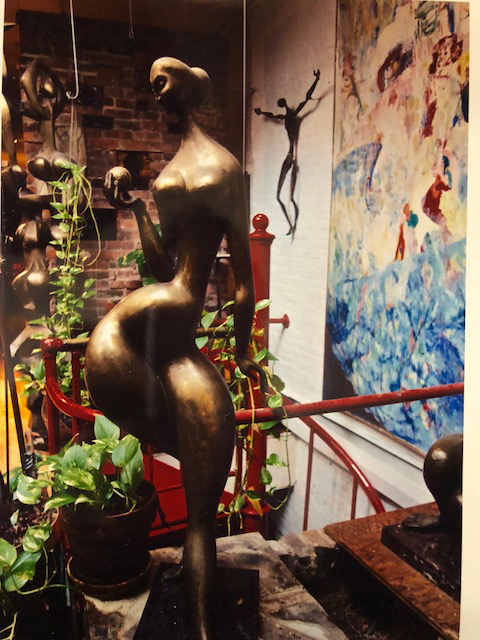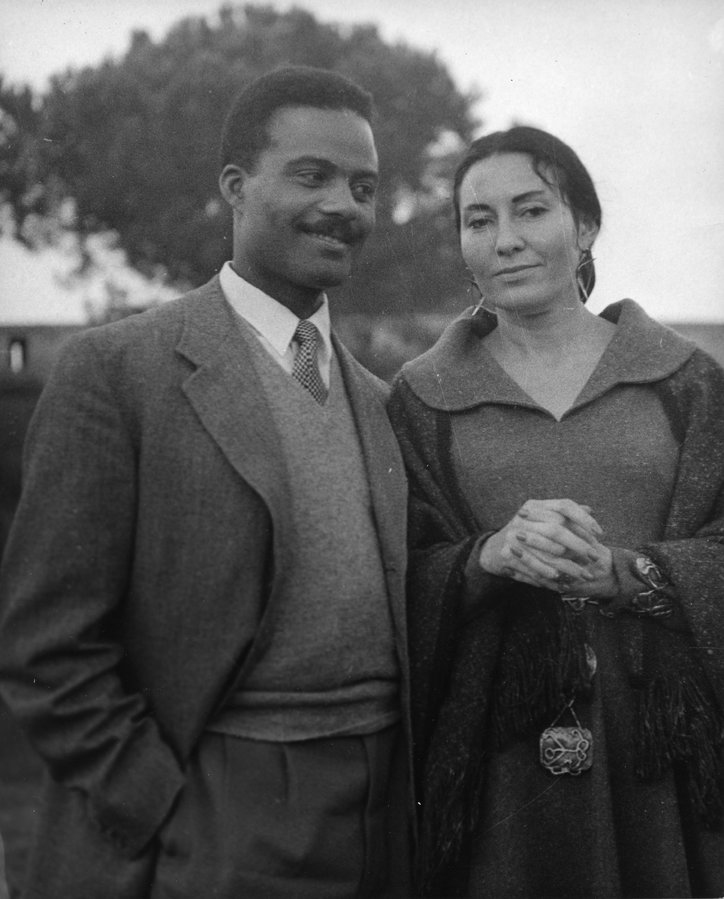RICHANDA RHODEN
Exhibition extended through Sunday September 30
Reception in honor of the artist Sunday September 16, 6–8pm
Soloway is pleased to present an exhibition of paintings by the late Brooklyn-based artist Richanda Rhoden.
Rhoden, who painted nearly every day until her death in December 2016, would be 101 years old at the time of this exhibition. To the best of our knowledge, this is her first solo show in New York City.
These paintings and objects are a few of the threads left from an elaborate tapestry of a huge, long, rich, committed, exceptional life. Unwaveringly from the 1950s through early 2000s, Richanda upheld the value and necessity of her own painting practice despite the preferences of a largely male-dominated—and later youth-oriented—art market. Her world was devoted to the sustenance of her own work, as well as to the life and public recognition of her sculptor husband, John Rhoden, for whom she was a muse. The silence after such a life lived feels drastic, and this exhibition aims to convey, even in some small way, the romance and importance of her story, through artworks that persist beyond life and language.
***
Richanda Rhoden (née Phillips) was born and raised in Washington state to Native American parents, her mother Cherokee and father Menominee. She met John Rhoden in New York while studying art at Columbia University. They married in Rome, where he was a fellow at the American Academy. In 1960, the Rhodens purchased a brick parking garage on Cranberry Street in Brooklyn Heights, which they converted into an artists’ mansion and studio housing John’s multi-ton, cast-bronze sculptures; chandeliers and furniture collected from their travels to Indonesia, Africa, and Italy; and neighborhood parties which Richanda continued hosting decades after John’s death in 1994. As Richanda explained at one of her last get-togethers, she and Isamu Noguchi were both bidding on the same building because—as a garage retrofitted with steel-reinforced floors and a large freight elevator—it was an affordable artist studio with a capacity for heavy sculptures on each level.
Over their lifetime, the home also became the primary display for hundreds of Richanda’s vibrant paintings, made up of a mythological language of her own creation, culled from multiple influences and cultures. These works covered the walls, many hung in large artist's frames built onsite, while stacks of large canvases spilled onto the floors. Her paintings recall dream scenes of Marc Chagall, carnivalesque figures of James Ensor, lusty brushstrokes of Joan Mitchell. Yet the canvases are landscapes unique to themselves, containing dancers in clouds of bright pinks, Balinese mountains in purples and blues, the embedded symbols of a tarot deck. A huge number of her husband John’s sculptures were also installed in the three-story house, filling the space ground-to-ceiling with Richanda’s likeness cast in bronze.
With her mobility faltering in her 90s, Richanda made the freight elevator into her painting studio, where she could move between floors and continue to work each day, on wide, unstretched canvas tarps. At the time of her death, at 99 years old, there were about a dozen paintings in progress, still tacked to the elevator wall.
This winter, over 200 of John Rhoden’s works were moved into the permanent collection of the Pennsylvania Academy of Fine Arts, who—with the sale of the Rhodens' home—will be shepherding John's legacy and art. However, with little exhibition history and provenance for Richanda’s own work, her paintings have yet to find a permanent institution.


